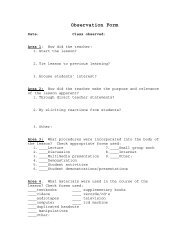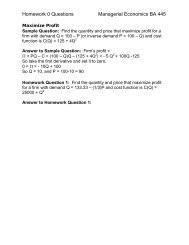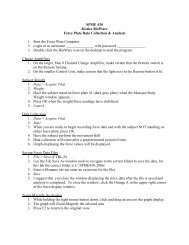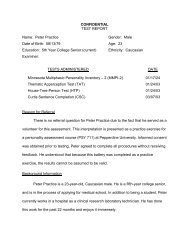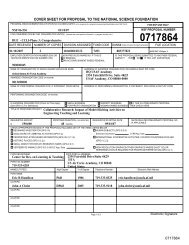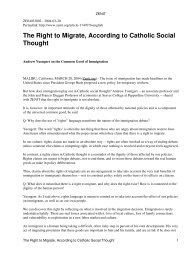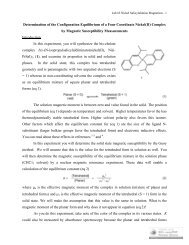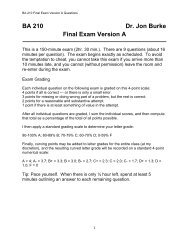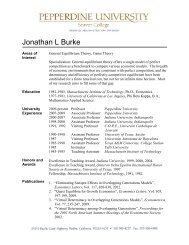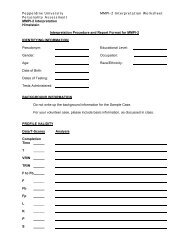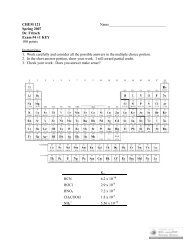pediatric neuropsychological test battery reference
pediatric neuropsychological test battery reference
pediatric neuropsychological test battery reference
You also want an ePaper? Increase the reach of your titles
YUMPU automatically turns print PDFs into web optimized ePapers that Google loves.
Cluster of Knowledge• Includes Test 11: General Information and Test 19: Academic Knowledge• Represents general information and curricular knowledgeVerbal Comprehension• Includes the following four sub<strong>test</strong>s: Picture Vocabulary (lexical knowledge), Synonyms(vocabulary knowledge), Antonyms (vocabulary knowledge), and Verbal Analogies(reasoning using lexical knowledge) to measure different aspects of languagedevelopment• Measure of acquired knowledgeVisual-Auditory Learning• Test of long-term storage and retrieval involving associative and meaningful memory• Asked to learn and recall rebuses (i.e., pictographic representations of words)Spatial Relations• Test of visual-spatial thinking• Requires identification of the two or three pieces that form a complete target shapeSound Blending• Test of auditory processing <strong>test</strong> of phonetic coding• Asked to synthesize language sounds after listening to a series of syllables or phonemesConcept Formation• Test of fluid reasoning and executive processing consisting of a controlled-learning taskinvolving categorical reasoning based on principles of inductive knowledge• Requires the derivation of rules for each item upon presentation of a complete stimulusset and examiner feedbackVisual Matching• Test of processing speed that is perceptual• Visual Matching 1 is used for preschool children and individuals with impaired cognitivefunctioning requires pointing to the two matching shapes in a row of 4-5 shapes• Visual Matching 2 is used for individuals above a maturational age of 5 and asked for thelocations and circling of the two identical numbers in a row of 6 numbersNumbers Reversed• Test of short-term memory as well as attentional capacity and working memory• Requires the retaining of a span of numbers in immediate awareness while performing ametal operation on it by reversing its sequenceIncomplete Words• Test of auditory processing, including auditory analysis and auditory closure, aspects ofphonemic awareness, and phonetic coding• Asks for the identification of the complete word upon hearing a word with missingphonemes from an audio recordingAuditory Working Memory• Test of short-term auditory memory span, including working memory and dividedattention• Requires the reordering of information, repeating objects then digits in sequential orderupon the presentation of a series containing words and digits6




